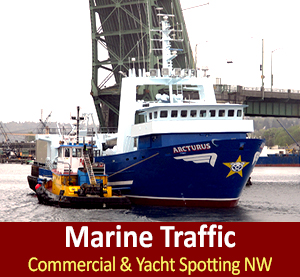 Recipe by She’s Cookin’
Recipe by She’s Cookin’
shescookin.com
Bristol Bay, AK Salmon Season is about to kick off this summer. When you purchase wild salmon you are buying American and supporting generational fisherman and their families. Thanks to recent improvements in handling, processing, and transportation, sockeye can easily be found worldwide in a variety of convenient forms—canned, fresh, flash-frozen, individually packaged, smoked, and pouched. Because Bristol Bay is the largest wild sockeye run in the world, the odds are good that if you are eating sockeye in the U.S., it’s from Bristol Bay. Curious where your salmon comes from? Just ask! And remember, all salmon labeled Atlantic, Norway, Chile or even Organic is farmed, not wild.
Thanks to its nutrient-rich diet consumed in the cold clean waters of the Bering Sea, Bristol Bay Salmon is rich in protein, Omega-3 fatty acids, and Vitamin D, sockeye is sensible nutritious choice for people of all ages; one 3.5-ounce piece of cooked sockeye has 220 calories, 27 grams protein, 1200 mgs of Omega-3s, and a whopping 930 IUs of Vitamin D.
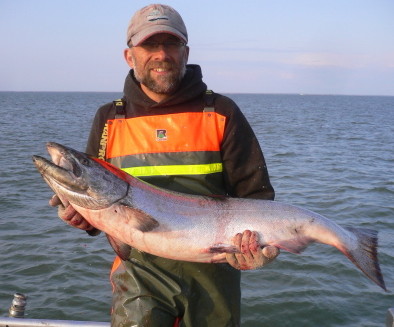 Go Wild for Fresh Bristol Bay Salmon
Go Wild for Fresh Bristol Bay Salmon
Heart Healthy—The American Heart Association urges consumption of at least two portions of fish each week. The high levels of Omega-3s found in sockeye, make it an excellent choice.
Brain Power—DHA, one of the long chain Omega-3s found in sockeye salmon, plays a key role in brain function. Recent studies also indicate that Omega-3s may play an important role in mental health and prevention of depression. The brain boosting powers of sockeye make it a superior choice for stressed students, new moms, and older adults!
Healthy Bones—Vitamin D is critically important to bone health, because the body can’t absorb calcium without it. Sockeye is inherently rich in this vitamin and has about 930 IU units per 3.5 ounce serving. An 8-ounce glass of vitamin D fortified milk, on the other hand, only contains about 100 IU units.
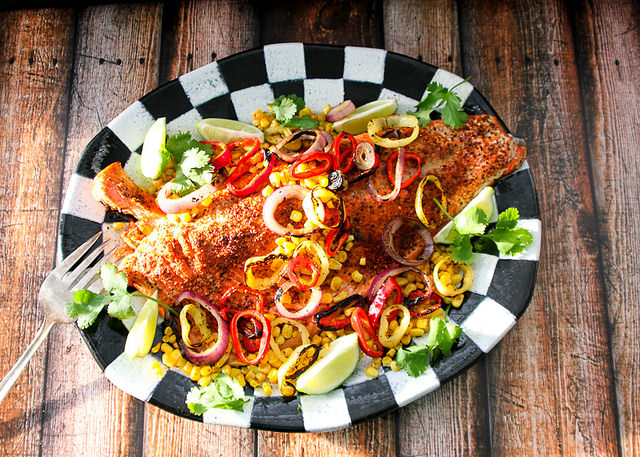 Spice Rubbed Wild AK Sockeye Salmon
Spice Rubbed Wild AK Sockeye Salmon
Wild Sockeye salmon with a dry rub of spicy Pilpelchuma is deliciously stunning with vibrantly colored sweet peppers, onion, and corn for an elegant entree that’s quick enough for a weeknight.
2 tablespoons of olive oil
1 tablespoon Pilpelchuma*
1 tablespoon tangerine juice
½ teaspoon dried oregano
2 colored sweet peppers, cored, seeded, and cut crosswise into rings
1 red onion, cut into ½” rings
1 jalapeno, cored, seeded, and sliced into rings
1 cup frozen corn
1 avocado
1 cup Greek yogurt
juice of half a lime
few splashes of Tabasco sauce
½ cup corn nuts
lime wedges
cilantro
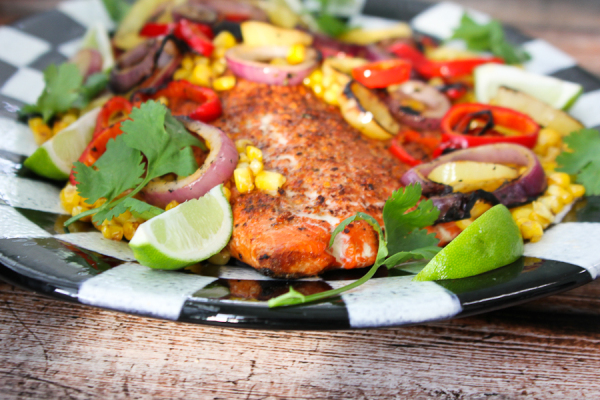
- Heat the grill to 400 degrees. After cleaning the grate, brush it with oil.
- While the grill is heating, prepare the avocado sauce: combine the avocado, yogurt, lime juice and tabasco in a blender and pulse to blend.
- Put the bell peppers, onions and jalapeno in a bowl and toss with 1 tablespoon olive oil and the oregano. Place on a vegetable grilling rack lined with aluminum foil, grill until soft and slightly charred, about 5 minutes.
- Rinse salmon and pat dry. Do not remove the skin – it adds tremendous flavor to the fish.
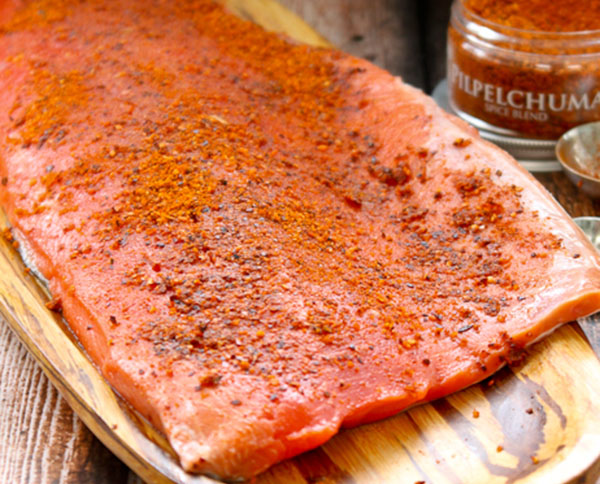 Sprinkle Dry Rub on Salmon After Brushing With Oil
Sprinkle Dry Rub on Salmon After Brushing With Oil
- Brush with olive oil and sprinkle with dry rub. Combine 1 tablespoon olive oil and tangerine juice and brush on the salmon during grilling. Grill for approximately 8 minutes with the skin side down. Heat a cast iron skillet and quickly char the corn while the salmon is cooking. Wild salmon has less fat making it drier and very easy to overcook. With fish, it’s better to be a bit undercooked, plus, it will continue to cook while it cook with residual heat. Let the salmon rest for 5 minutes before slicing into portions.
- To serve: Place the side of salmon on a large platter. Arrange the peppers and onion around it and garnish with corn nuts and cilantro.
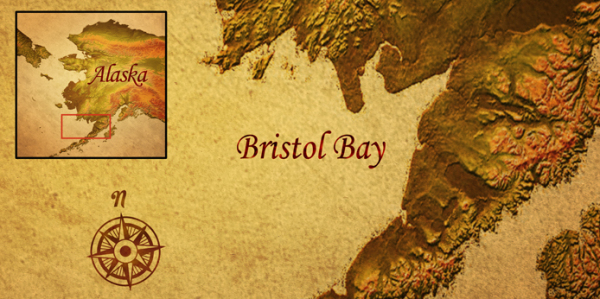 Bristol Bay in Southeast Alaska
Bristol Bay in Southeast AlaskaFor hundreds of generations, Bristol Bay has supported Native Alaskan families living a traditional subsistence lifestyle, and for 130 years it has supported a thriving commercial fishery that supplies the world.
During much of the year, the region is gripped in ice and snow, but during June and July, Bristol Bay springs to life, with the return of millions of sockeye salmon and thousands of commercial fishermen. As massive schools of salmon “pulse” into the bay, Alaska state biologists work with fishermen to allow optimal catch levels while preserving the species for future generations and protecting the environment from imbalances.
Historically, the commercial fishing industry in Bristol Bay dates back to the late 1800s when canneries were established and all of the sockeye was packed into cans and shipped elsewhere. Today, thanks to the fleet’s ongoing commitment to quality and to improvements in transportation and processing, a large portion of Bristol Bay sockeye is available in a variety of forms that are convenient for today’s busy, health conscious cooks.
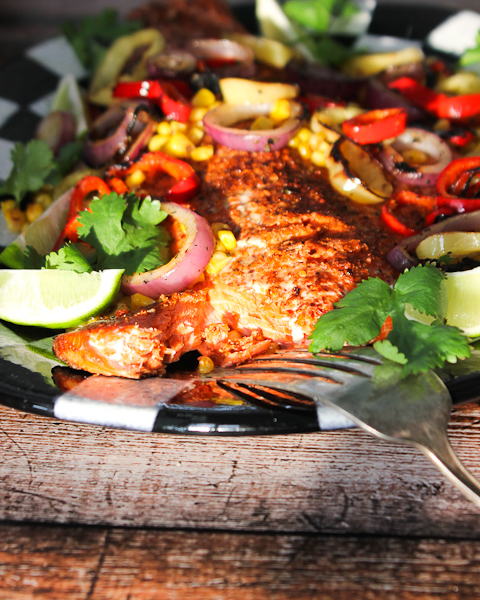 Boaters, Try This Recipe!
Boaters, Try This Recipe!
 Recipe by She’s Cookin’
Recipe by She’s Cookin’
shescookin.com




